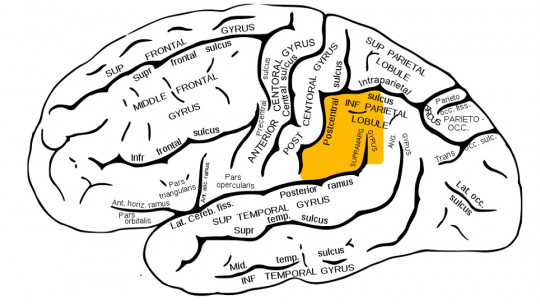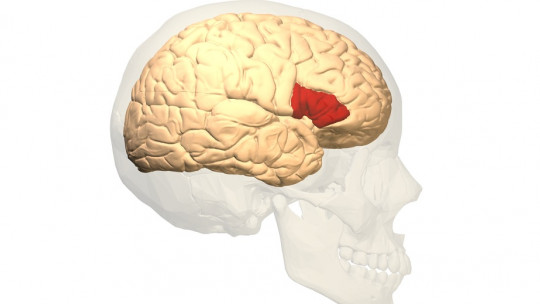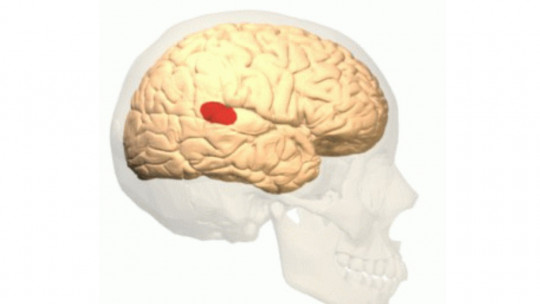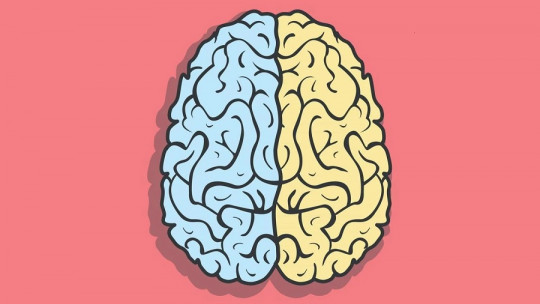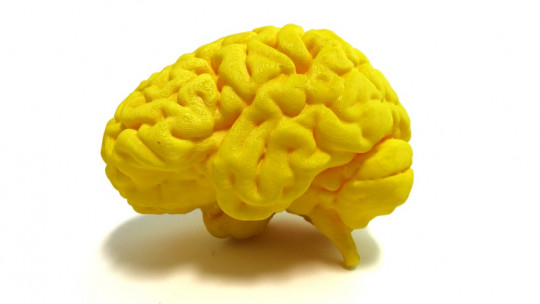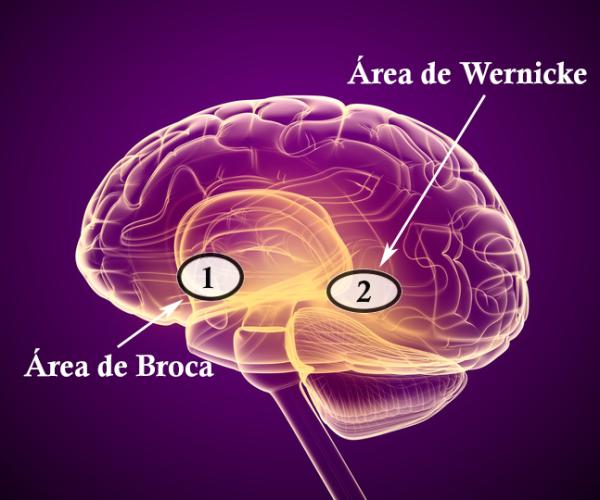Do you know what aphasia is? Aphasia is a language disorder that occurs as a result of brain injury. It is a disorder that can affect reading, writing, expression or comprehension. In short, it is a disease that prevents you from communicating. Aphasia usually occurs suddenly after a stroke or head injury. In this PsychologyFor article, we are going to see the 10 different types of aphasia, their characteristics and examples.
If you are interested in knowing what the types of aphasia are, why they occur and what their treatment is, continue reading.
Expression aphasia
Expressive aphasia is commonly called Broca’s aphasia or as motor aphasia In that case, the injured area is Broca’s area.
It is a type of aphasia characterized by almost impossibility of fluent verbal production The individual knows what he wants to say, but has difficulty saying or writing it.
Example: An individual may say “Book book two table,” when he meant “There are two books on the table.”
The symptoms of expression aphasia are:
- The individual speaks little and is aware of his mistakes.
- Inability to find the words you want to speak.
- It strives to harmonize the tongue, pharynx and larynx.
- Emits distorted words.
- He does not have complicated words in his speech.
- Language comprehension is almost normal.
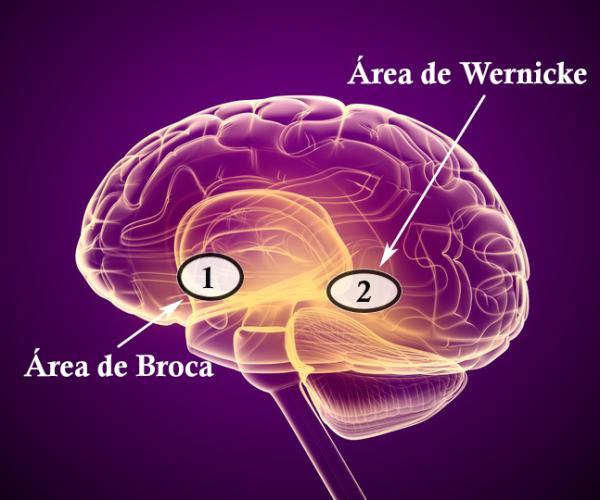
Reception aphasia
Reception aphasia is also known as Wernicke’s aphasia or as sensitive aphasia In that case, the injury is in Wernicke’s area, that is, the temporo-parietal areas.
It is a type of aphasia in which the individual presents language difficulties and comprehension difficulties to understand speech, including their own, they are not aware of the errors they make when communicating And, there is also an inability to repeat other people’s words. This aphasia is characterized by a meaningless fluency.
Example: “I called my mom on television and she didn’t understand the door. “My mother is not too old to be young yet.”
The symptoms of reception aphasia are:
- Inability to repeat words and phrases correctly.
- Serious deficit in listening and reading comprehension of language.
- Replacing words with others with a similar meaning.
- Problems remembering words, such as names of objects.
- The individual uses words without meanings.
- Lack of awareness of linguistic errors.
conduction aphasia
Conduction aphasia is consequence of a brain injury in a part called the arcuate fasciculus, which connects Broca’s area with Wernicke’s area
The individual with conduction aphasia has as a characteristic a inability to repeat Their language is spontaneous and fluent, it has articulation and prosody, but the speed of their speech is slow. Has a relatively normal understanding.
In this aphasia we cannot present an example, but you can imagine an individual who speaks slowly, with slow pronunciation of words.
The symptoms of conduction aphasia are:
- Taking many pauses when speaking.
- Emission of sentences with few words.
- Little effort when speaking and good articulation.
- They do not usually present syntactic deficits.
- Comprehension of oral language is variable.
- Reading aloud and writing present alterations.
- Reading comprehension is usually preserved.
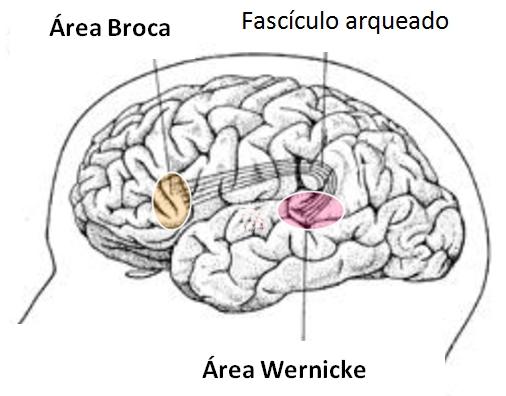
Transcortical sensory aphasia
Transcortical sensory aphasia is characterized by a injury to the back of the junction between the parietal and occipital bones, an alteration of the temporal and parietal cortices near Wernicke’s area.
In that case, aphasia is characterized by a great difficulty in evoking words, Comprehension is preserved and individuals have preserved the naming capacity, although they usually need articulatory aids. It is a type of aphasia that occurs more commonly in individuals with Alzheimer’s.
In this aphasia we cannot present an example, but you can imagine an individual with great difficulty saying the words.
The symptoms of transcortical sensory aphasia are:
- Frequent confusion.
- Fluent spontaneous language with paraphasias and neologisms.
- Problems naming objects.
- The individual can repeat quite long words and phrases.
- They tend to repeat the last words used by the interlocutor.
Transcortical motor aphasia
Transcortical motor aphasia may also be known as dynamic aphasia That kind of aphasia arises from injuries in the supplementary motor area of the dominant frontal lobe. Or due to lesions in the white matter in the prefrontal and premotor region.
The individual with transcortical motor aphasia suffers from reduction of spontaneous speech, generally their speech is difficult, scarce and composed of short phrases Understanding is preserved and they retain the ability to name. It is an aphasia that is accompanied by motor alterations affecting the performance of actions.
The symptoms of transcortical motor aphasia are:
- Initial mutism.
- Loss of creep.
- He speaks sparsely.
- Preserved repetition.
- Motor alterations.
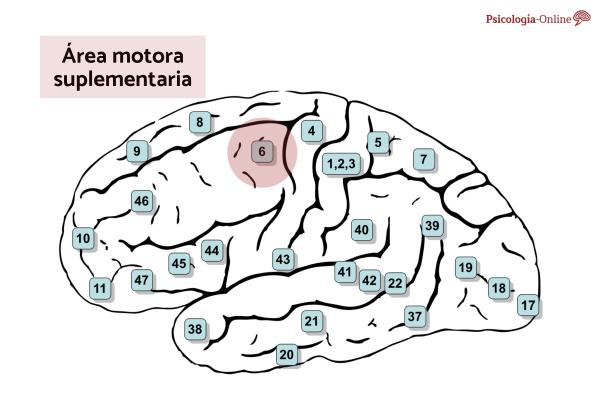
global aphasia
Global aphasia is characterized by a injury caused by temporary interruption of blood flow to the artery this lesion covers the entire perisylvian area of the dominant hemisphere.
The individual with this type of aphasia has severely affected expressive and comprehension functions
This type of aphasia is generally consequence of cerebrovascular accidents that compromise the territory of the left middle cerebral artery. When it occurs, at first a total mutism usually appears in the individual, and then a certain verbalization occurs. It is classified as a severe type of aphasia, since in most cases, individuals are able to say few words and their understanding is very limited, they are unable to read or write.
Example: When the individual wants to answer “yes” they respond “no”, they often get confused when they want to say one thing and end up saying another. Another example is that they repeat the same syllable “ta ta ta ta”.
The symptoms of global aphasia are:
- Comprehension and expression affected.
- Inability to read and write.
- Reduced verbal emissions.
- Stereotyped verbalization.
- Fluency and comprehension problems.
- Severe speech disorder.
Mixed aphasia
Mixed aphasia, also called mixed extrasylvian aphasia, mixed transcortical aphasia or called language area isolation syndrome It arises from certain pathologies, such as: hypoxia, carbon monoxide poisoning, acute occlusion of the carotid artery or transient cardiac arrest.
This aphasia is a serious language disorder characterized by non-fluent verbal production, incomprehensible expressions, obscene and stereotyped words. It is an aphasia that arises in final stages of Alzheimer’s disease, fronto-temporal degeneration and dementia non-specific.
The symptoms of mixed aphasia are:
- Preserved repetition.
- He speaks sparingly, but with meaning.
- Difficulty in naming.
- Affected understanding.
- Alteration in reading and writing.

anomic aphasia
Anomic aphasia can occur due to injuries in various locations or can also be residual due to some other aphasia in the rehabilitation process.
This type of aphasia is characterized by a difficulty in naming and fluent expression , this occurs because individuals with this aphasia have difficulty correctly using the names of people, places and things. They have a relatively preserved understanding, although they may have difficulties understanding written words.
The symptoms of anomic aphasia are:
- Affects nouns.
- Fluent speech, but it is interrupted when trying to express a certain word.
- Preserved understanding.
- There are no errors in repetition and reading.
- Problems finding nouns in spontaneous writing.
Primary progressive aphasia
Primary progressive aphasia can also be called Mesulam aphasia It is a neurodegenerative disease that causes progressive deterioration of language On the other hand, other cognitive functions remain relatively preserved.
It is an atrophy in the frontal and temporal cortical areas, thus, it is considered a Dementia syndrome associated with degeneration.
The symptoms of primary progressive aphasia are:
- Difficulty understanding oral or written language, particularly single words.
- Problems understanding the meaning of words.
- Difficulty naming objects.
- Difficulty remembering words and word substitutions.
- Take frequent pauses when speaking to look for words.
- Difficulty repeating phrases or sentences.

Progressive non-fluent aphasia
Progressive non-fluent aphasia is a form of primary progressive aphasia, which has as its main symptom difficulty in verbal production
The individual with this type of aphasia has difficulty finding the right word and has poor verbal fluency.
The symptoms of progressive non-fluent aphasia are:
- Loss of verbal fluency.
- Mutism.
- Absence of oral expression.
- Grammatical omission.
This article is merely informative, at PsychologyFor we do not have the power to make a diagnosis or recommend a treatment. We invite you to go to a psychologist to treat your particular case.
If you want to read more articles similar to Types of aphasia: characteristics and examples we recommend that you enter our Neurosciences category.
Bibliography
- American Psychiatric Association. (2014). Diagnostic and statistical manual of mental disorders: DSM-5. Porto Alegre: Artmed.
- MACHADO, A., (2003). Functional Neuroanatomy. São Paulo: Editora Atheneu.
- Mayo Clinic. (2021). Aphasia. Retrieved from: https://www.mayoclinic.org/es-es/diseases-conditions/aphasia/symptoms-causes/syc-20369518

